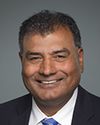Speaker, in response to (a), the divisions within the RCMP that equip some or all of their cruisers with automated external defibrillators, AEDs, are C, Québec; D, Manitoba; E, British Columbia; K, Alberta; and National.
In response to (b), the number of police cruisers by division equipped with AEDs are as follows: C Division, Québec, six police cruisers; D Division, Manitoba, two police cruisers; E Division, British Columbia, is unable to provide an accurate response at this level of detail, as it would require an excessive amount of resources and time; K Division, Alberta, six police cruisers; and National Division, two police cruisers
In response to (c), there was no recent increase in the number of RCMP cruisers equipped with AEDs in Divisions C, D, K, and National. E Division is unable to provide an accurate response at this time.
In response to (d), training for the use of AEDs is included in the standard first aid curriculum that all RCMP members take every three years.
The RCMP has approved the implementation of AEDs for the following RCMP operational areas: the emergency medical response team, the divisional fitness and lifestyle program, the Prime Minister’s protection detail, and where provincial policing standards require that an AED be available or carried in conjunction with a conducted energy weapon.
In response to (e), if an RCMP workplace is not outlined in (d) and requires AED implementation, the detachment commander or manager can obtain approval through the commanding officer.
In response to (f), between October 20, 2015, and December 5, 2016, the RCMP executive services and ministerial liaison unit received one piece of correspondence on defibrillators on February 26, 2016, from the office of the Minister of Public Safety and Emergency Preparedness. A response was provided on March 18, 2016.
National and divisional RCMP policies with respect to the use of AEDs by the RCMP can be found in chapter 9 of the RCMP National Occupational Safety Manual.




















